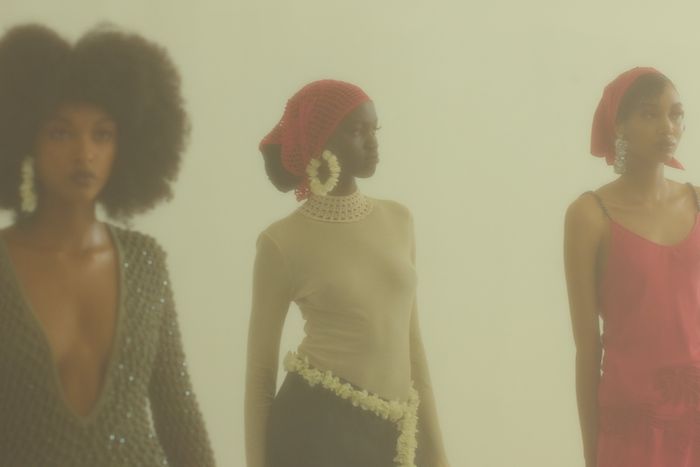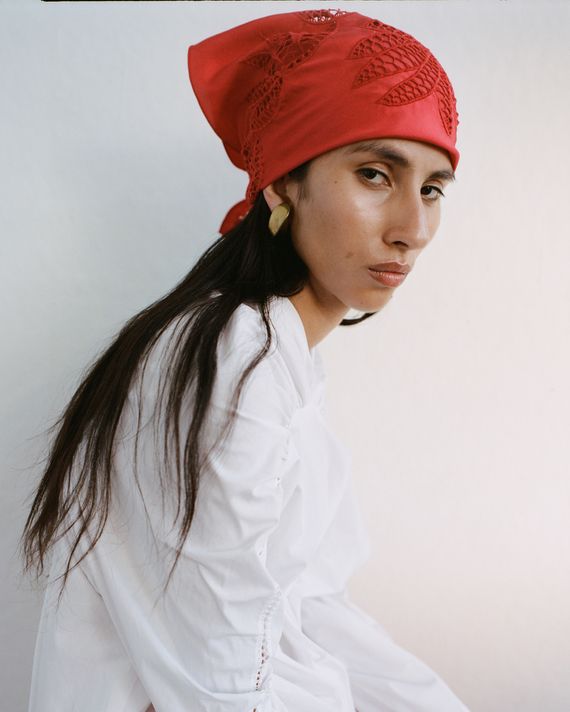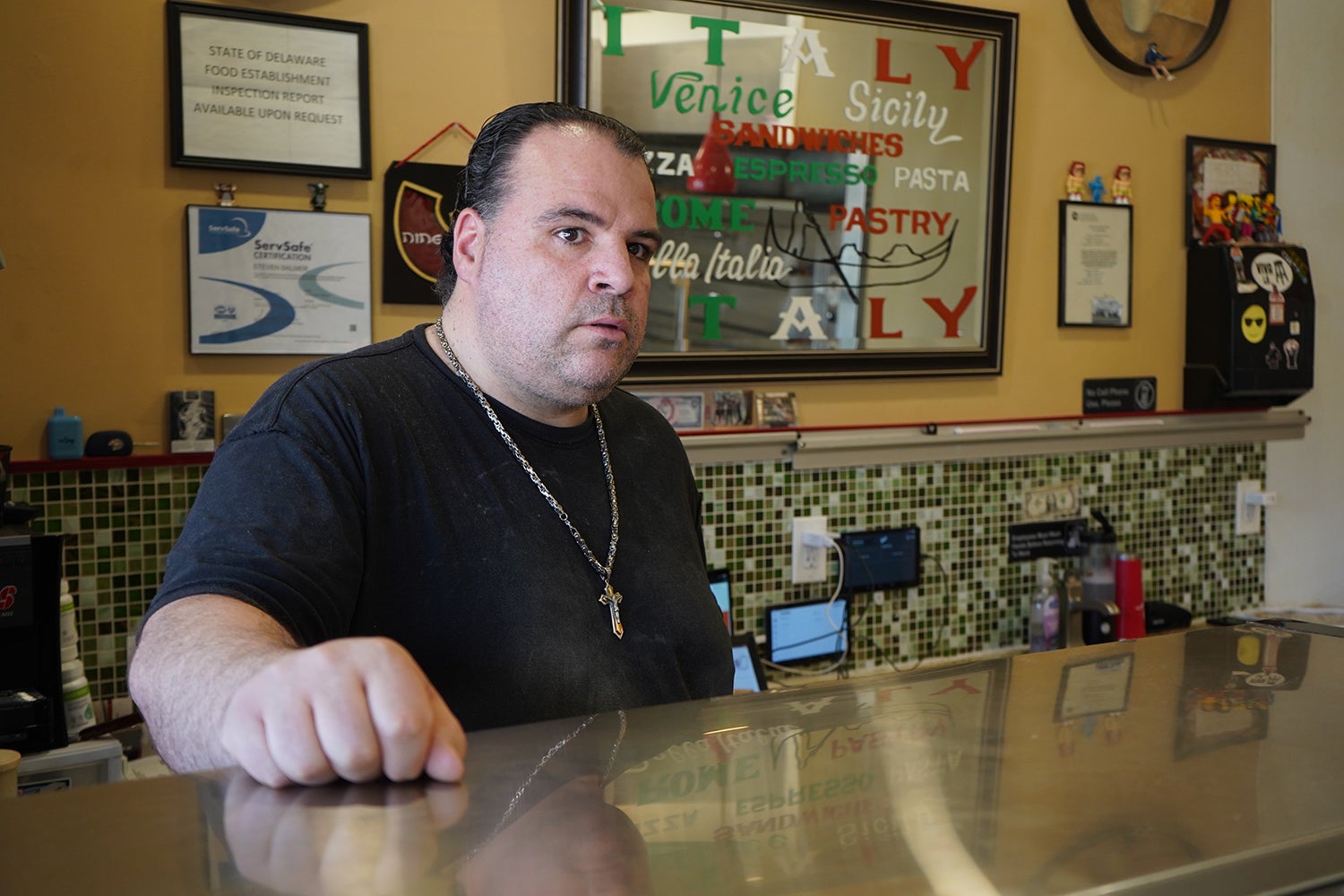Fashion
The Designer Bringing Jamaica To The Fashion World’s Attention
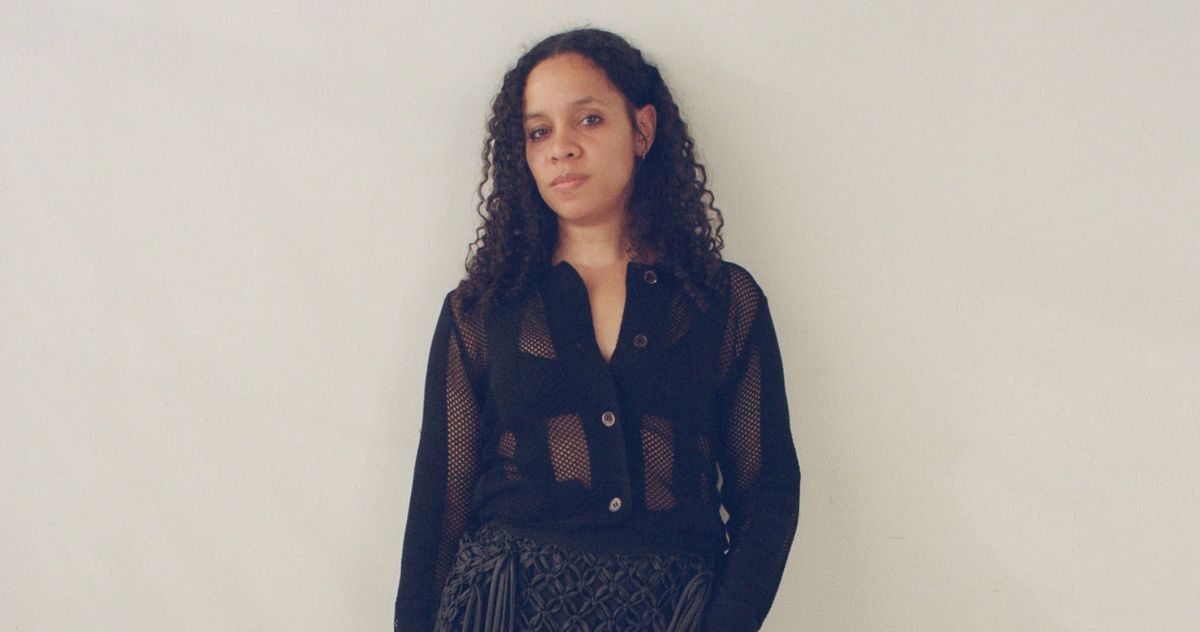
Rachel Scott glides into a room so subtly that you could miss her — but then you feel her aura, as if a light’s shimmering off of her. It’s the same light that shines through the Diotima founder’s sensuous yet powerful designs. We first met outside her Brooklyn brownstone home in 2021. She was freshly launching Diotima, while I was leaving Brooklyn to move myself and my heart to Jamaica. That sweet summer afternoon, I saw a refreshing new collection filled with beautifully crafted sequined knits, idyllic tailoring, and whimsical textures at a time when fashion felt irrelevant during a global shift and pandemic.
Scott spent her time through the pandemic honing in on her point of view and handcrafting pieces like crochet dresses that speak to the power of sensuality and imagination. (Scott, hailing from Kingston, Jamaica, has a global lens, having worked for designers like Rachel Comey in New York.)
And now, three years later, Diotima is nominated for the highest award in American fashion: the CFDA’s American Womenswear Designer of the Year.
Today, Scott is balancing a new life: She is newly married to her partner, Sade; last year, she won the CFDA Emerging Designer of the Year award and is stocked in several new retailers supporting and selling her collections. This season she used melted-down pailletes as trim on pieces to mimic the look of oyster shells. She plays off the complexities of contradictions, creating a world where you can find space for yourself.
We caught up ahead of tonight’s award ceremony.
Mecca James-Williams: What was your childhood like?
Rachel Scott: My mother never let us have things like Nintendos or anything like that. Her whole thing was you could never be bored here in Jamaica. So we spent a lot of time outside.
I mean, literally climbing mango trees and playing games with my brothers and all his friends. My mother would wake us up plus take us up to the mountains and we’d find a river. We would drive up Gordon town [in Jamaica] and drive until we found a tiny road that led to a river, and just climb into the waterfalls. My younger childhood was really idyllic. Even outside Jamaica:
My mother was a flight attendant, as well, so she really wanted us to see the world. She would pick us out of school and put us in a jump seat and take us all over the world. It was really special.
Growing up in Kingston, my teenage life was like what you would expect; I went to parties every weekend. There weren’t a lot of places to buy clothes in Jamaica — especially in the ’90s — so we were always tasked with making our own, because we wouldn’t dare wear the same thing twice!
I had to figure out how to make my own clothes then. I would buy fabric at Pings Fabrics and Pablos in Halfway Tree. I’d make a little excuse of a skirt and a top, barely covering anything; I’d make myself outfits for every party.
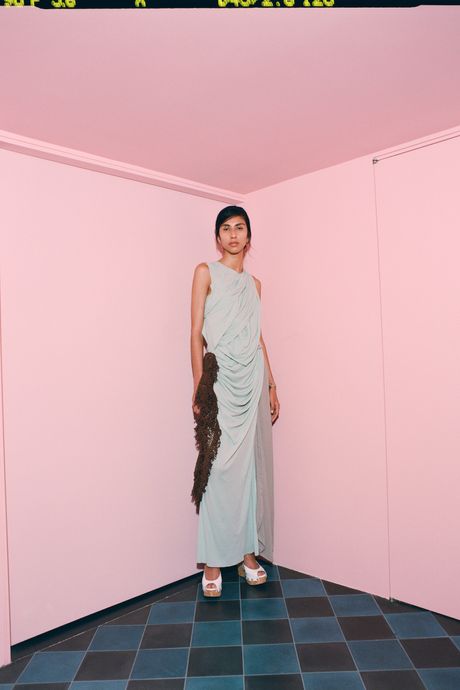
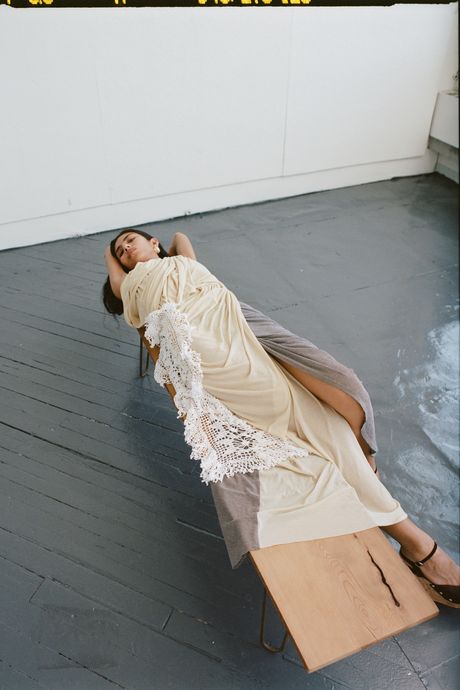
From left: Photo: Deirdre LewisPhoto: Deirdre Lewis
From top: Photo: Deirdre LewisPhoto: Deirdre Lewis
M.J.W.: What was your first sewing experience like? What was your first experience designing something even for yourself, if you remember?
R.S.: The first thing I sewed was literally Barbie clothes and Barbie bed linens.
M.J.W.: Yes, Barbie World!
R.S.: I wanted a Ken doll, so I cut off the hair of one of my Barbies. My mom wouldn’t buy me the Barbie Dreamhouse, so I took a tissue box, and I made that as the bed, and made pillows and linens, then I embroidered them. That was my first experience. As I got older, making clothes for myself was just like a utility thing, because I was like I needed to go out and I needed to look good, and I could not repeat an outfit. That was like a weird, ridiculous thing for me. The things I made were so ridiculous. Some skirts were so short that they weren’t covering anything whatsoever. I’d make bikini tops with very simple patterning.
M.J.W.: From a young child, you were creating a world, and now you’re creating a world on such a global stage. So that takes me into your world. Tell me more about the Diotima world.
R.S.: I always want to create a world that can be sensual and strong. I mean, those are pretty obvious in my work, but there is a reverence for history and craft. I want my world to create a space of contradiction and of tension and complexity. I think that complexity is one of the most interesting things to me — like in people, especially in art and film. I think I’m always trying to create these beautiful moments of tension that can’t be quite verbalized.
In my work, the combination of something very overtly sexual with something a bit more restrained. Also in material, I like something very structured mixed with things kind of falling apart with fringing or something like that. These juxtapositions I find very interesting. It’s something that I find interesting in people and culture as well. I try to build that through imagery, through the experience at the presentations, and on Diotima’s website and Instagram as well.
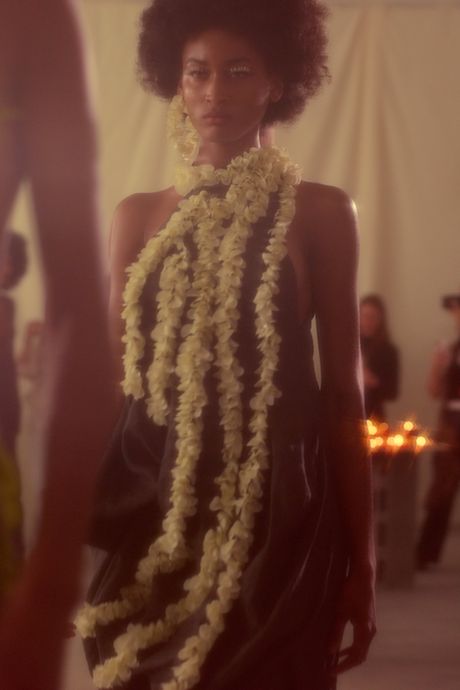
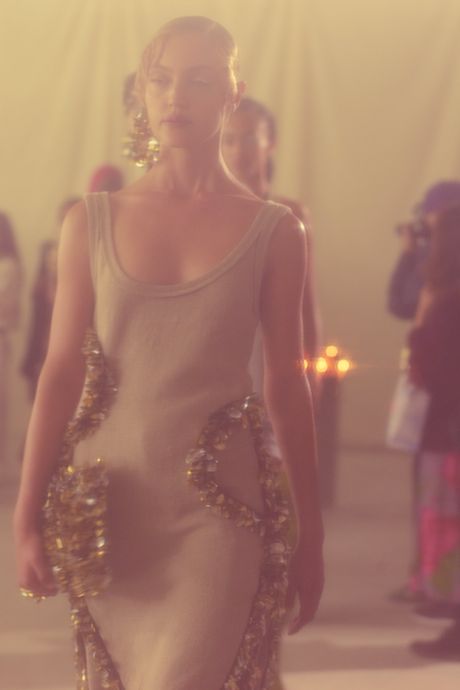
From left: Photo: Austin SandhausPhoto: Austin Sandhaus
From top: Photo: Austin SandhausPhoto: Austin Sandhaus
M.J.W.: I see that so much in your work as well. Since we still are in your world, what’s your favorite song or song that gets you in the zone?
R.S.: Barrington Levy’s song “The Vibes Is Right.” It’s the only song he’s ever made like that. It has a weird experimental jazz fusion to it. I’ve had it played at every single presentation because it’s so beautiful.
M.J.W.: What was your favorite show to watch growing up? Was there a show or character you watched and were inspired by or loved their perspective?
R.S.: That’s a tough one. When I was really young, I was obsessed with My So-Called Life.
The Claire Danes character. It was the ’90s, you know, like the origins of a tortured, angsty teenager. I felt like I saw some of myself in her. It was a show I watched in private; I never really shared it with anyone.
M.J.W.: Ah, let me go watch that show! I’m not familiar.
R.S.: Oh lord, see? I am telling you my age.
Photo: Austin Sandhaus
M.J.W.: That’s a beautiful thing. It also segways into my next question. What I love about your journey is you worked in the industry for a minute — you are seasoned. You developed your craft over time. You weren’t fresh out of school and, boom, here’s your first collection; you put in your time. In 2024, it’s hard to imagine what things will be like over time, as everybody’s so caught up in the present. Can you speak about that journey of working your way up and what that felt like?
R.S.: Honestly, I don’t know if that’s available to everyone. It certainly wasn’t available to me to launch after school. I just didn’t have the resources. I didn’t even have a visa or all of these things. The part that was actually really helpful is that I didn’t study fashion initially. I studied French and art. Then I studied fashion for a year after I graduated.
For the first few years in the industry, it was really an education. You learn so much in the beginning year about the business, how things all work, but really about design too. You learn who you are and what you want to say. I’m really happy that I didn’t start right out of school. Even if it had been possible, I don’t think I would have been ready, and I don’t think I would know who I was. It worked out for me in the right way.
M.J.W.: I feel the same way; I’m so happy I assisted other stylists and editors first. What was it like working under other designers? What were things that you took away, and what were things that you were excited to do when you created your own?
R.S.: Working for other people, you learn what you want to do and what you don’t want to do, as a business person and as a designer. That’s really helpful. I have the most respect for designers. There are so many elements to it aside from designing. But in designing itself, there’s reverence for what it means to dress a person. There’s so much responsibility in that.
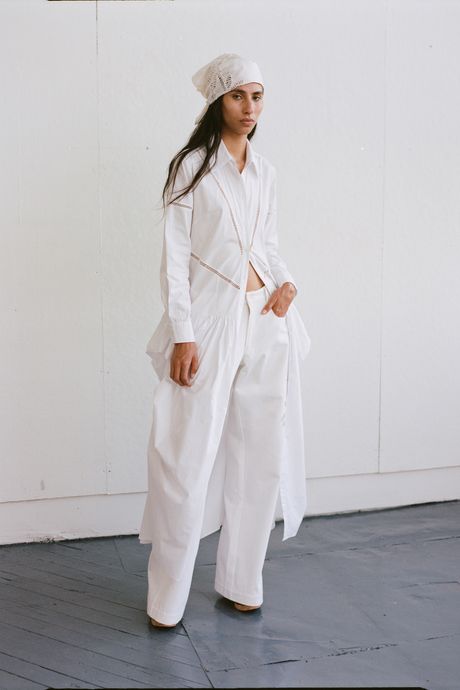
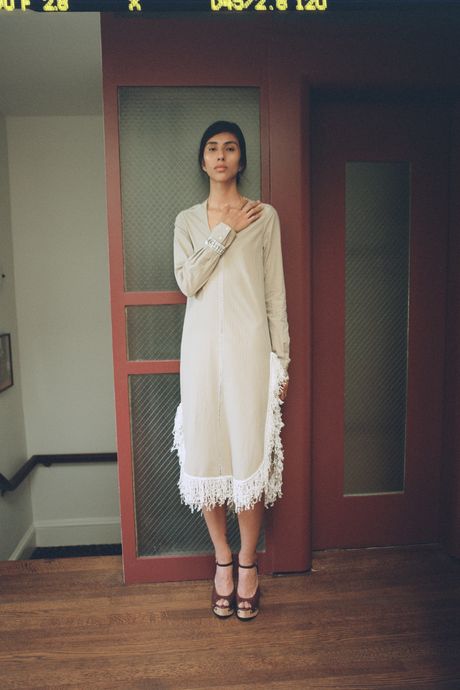
From left: Photo: Deirdre LewisPhoto: Deirdre Lewis
From top: Photo: Deirdre LewisPhoto: Deirdre Lewis
M.J.W.: What did you learn about yourself?
R.S.: I always felt a little bit unsure about myself as a designer when I was younger because I didn’t go to design schools like Central Saint Martins and I didn’t go to Royal Academy of Arts, and la di da. In fashion, there is this idea of pedigree, which I have taken to heart for a long time. But it’s ultimately not about pedigree; you can learn technical skills, but you cannot learn a point of view. That comes through life and education at large.
M.J.W.: I have to do service to Jamaica in my next question, as you are from Jamaica. You were raised here. You draw so many beautiful parallels through your collections in ways that speak to the whispers of Jamaica and not the yells. Whether showcasing one leaf in your presentation instead of the whole bouquet or merging crochet in a tailored trouser. Can you speak more about those soft whispers that you learned while living here?
R.S.: I love that analogy. This speaks to the complexity that I mentioned earlier. We as Jamaicans, are often flattened. It’s like, “This is Jamaica; there are white beaches; there is dancehall.” Everything is in tropes, you know, so I feel a responsibility to tell a different story or a story but in a different way; in a way that feels more true to me. I don’t think my experience is the same as anyone else’s growing up in Kingston around those times; it is personal. I love the subtlety and not everything red, yellow, and green. I think it gives a bit rounder and fuller expression of who we are and opens it up to more people. Like, I don’t want Diotima to be niche. I want it to be universal.
Photo: Deirdre Lewis
M.J.W.: I love how Diotima opens the world to different notions of Jamaica. From your first collection, it was a new lens and perspective. It always adds a little more into your world with each collection. So you won your first CFDA award last year for Emerging Designer and now you are nominated for Designer of the Year — wow. Can you tell me about that journey in such a short time?
R.S.: Yeah, winning Emerging Designer of the Year last year was shocking. I was shocked.
It was incredible last year. It started with the LVMH Prize, then CFDA. Those are competitions. I applied for them trying to win money to fund the business, but being recognized, like having won the Emerging Designer of the Year award, is incredible because it’s your peers choosing you. Being nominated and voted on by people who know the world that you’re in — first of all, recognizing you, nominating you, then voicing for you — is a level of valuation and a form of gratification I just can’t explain. It’s incredible, super-humbling, and quite beautiful. When I learned I was nominated this year, I screamed out loud.
M.J.W.: Wow, what a year can do.
R.S.: Yes, it’s amazing! Honestly, it’s taken a toll on my health, but it’s exciting and encouraging. It’s difficult to start a business, and it’s even more difficult to start during a pandemic without resources. Then let’s not even get into the fact that I’m a woman and I’m Black; it’s just like everything is pitted against you, for sure. So, feeling like I’m making some kind of statement and it’s being received is very special.
M.J.W.: I love seeing the world receive your brand in such an immersive way. Who is your muse or would you want to see Diotima on?
R.S.: I’m really quite obsessed with people and culture. The most interesting thing is seeing the clothes go out into the world. On an everyday level, I’m inspired by my wife; I’m inspired by my fit model, Karine. I’m inspired by filmmakers; I’m inspired by gallerists; I’m inspired by you. One day, Rihanna is going to wear Diotima; I’m manifesting.
M.J.W.: Outside of creative, how is business? It’s a rough time right now with retailers. How has that been for Diotima?
R.S.: We’re continuing to grow, which is incredible because a lot of people are not growing or are shrinking right now. Because we’re a smaller brand, I have been mindful about who I partner with in wholesale. My retail partners are all incredibly supportive and take on the brand because they believe in the vision, which I am so grateful for. As we continue to expand, we’re focusing on the direct-to-consumer portion of the business. I’m excited to do that and cater to my customers.
M.J.W.: Okay, on my last note, what’s your sign?
R.S.: Capricorn
M.J.W.: Earth signs, we get it done.

